On the streets and alleys of late Qing Dynasty China, one often saw young people carrying large and small bags, selling various kinds of dried fruits along the road. These teenagers were mostly dressed a little sloppily, their faces still had childish features, but their eyes revealed a kind of perseverance and strong will.

The stalls were filled with various dried fruits, such as longan, red apples, walnuts, almonds, etc. Every time someone passed by, the teenagers would enthusiastically greet them and introduce the items they were selling. Their high-pitched voices made people stop in their tracks.
Most of these young people come from poor families and have to shoulder the responsibility of earning a living early. Every day, they wake up early, go to the market to buy dried fruits and carry their goods through the streets until nightfall. Although life is difficult, they never complain and always face customers with smiles and enthusiasm.
On the streets of Beijing, you can see some vendors pushing simple stalls, frying fragrant cakes. They are dressed normally, even dirty, their faces are full of traces of time but their hands are very skillful. They often sell from morning to night to make a living.
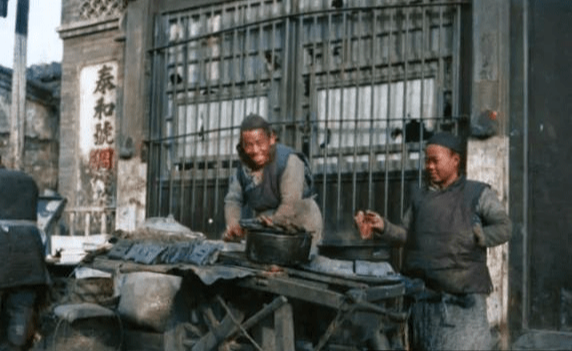
The stall is very simple, with only a small stove, a pan and a board. The dough is kneaded and the filling is placed on a cutting board, the vendor uses his hands to roll the dough, wraps the filling and then fries it in a pan of hot oil. After a while, the fragrant cakes are taken out of the pan. They arrange the cakes on paper to drain the oil and then wrap them for the waiting customers. These cakes are golden brown, crispy, have delicious filling and are extremely loved by the people. The vendors have won the trust and love of customers with their simple smiles and enthusiastic service style.
During the late Qing Dynasty, street vendors selling fried doughnuts were very popular in Tianjin, Beijing, Hebei and other places. Fried doughnuts were loved for their eye-catching golden color, crispy and sweet, delicious taste. They were made from glutinous rice balls wrapped in bean paste and fried carefully. Taking a bite, diners could clearly see the layers of yellow, white and black, bringing double pleasure to the eyes and taste buds.
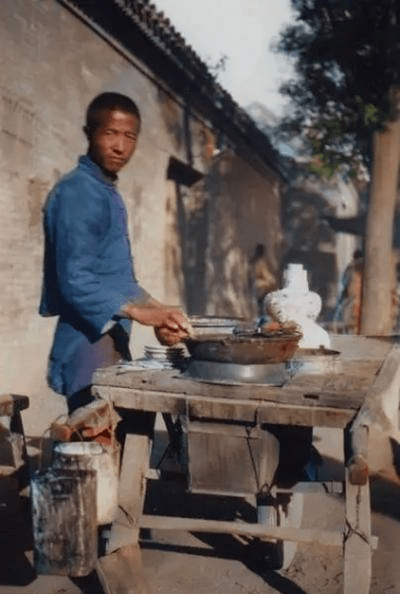
The texture of the donut is a bit chewy, the outer layer is crispy but not sticky, the elderly and children can easily enjoy this street food. In the society at that time, donuts became one of the snacks that people often chose to eat, play, and walk around.
At that time, street wonton stalls were one of the most popular snack stalls. Wonton is a traditional Chinese delicacy with a long history that has been passed down to this day. According to historical records, wontons have existed since the Western Han Dynasty and became even more popular during the Southern and Northern Dynasties. In later dynasties such as the Tang, Song, Yuan, Ming and Qing Dynasties, wontons were also recorded in many books.
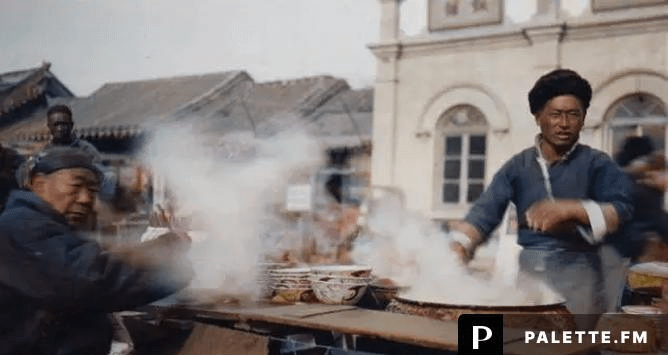
The earliest wonton stalls in Beijing during the Qing Dynasty were mainly street vendors, and later on, carts and permanent stalls appeared. Wonton stalls were usually quite simple, with only a small pot separated by an iron plate to cook bone broth. The rich and complete ingredients included winter vegetables, seaweed, coriander, dried shrimp, pepper, soy sauce, vinegar, green chives, etc., allowing diners to enjoy according to their personal preferences.
Street teahouses were an indispensable part of the daily life of the people of Beijing during the Qing Dynasty. These teahouses were extremely loved by the people because of their simplicity and modesty. When going out, going to work… when thirsty, you can stop by the shop to drink a cup of fragrant tea. Some people sip and chat, others drink quickly and leave immediately.
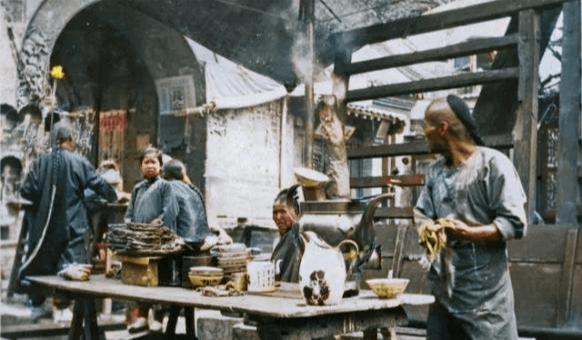
The way of drinking tea is also simple, not fussy and attention to detail makes people feel more friendly. These tea houses often have simple interiors, including tables, a few wooden stools and large porcelain bowls. All to create convenience for customers passing by.
Due to the scarcity of fresh water wells in the city, water delivery became a profession. They collected water and pushed it on wheelbarrows through the streets and alleys of the city to provide the precious fresh water to the people.
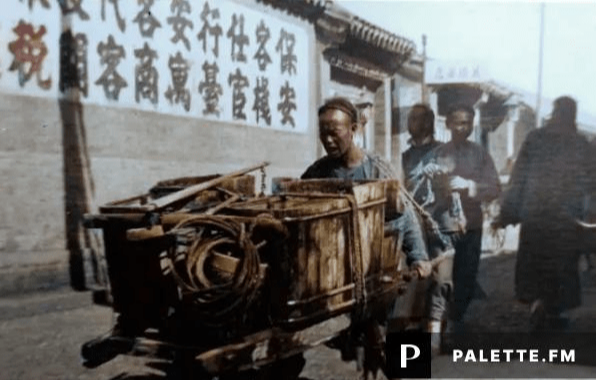
However, the work of water delivery people is extremely difficult and the income is relatively low. They need to wake up in the middle of the night to start work. In the cold winter, the ground around the well freezes, water delivery people have to use more strength to get water from the well. This process requires not only a lot of physical strength but also patience and perseverance. Even in the hot summer, water delivery people are not allowed to go shirtless, because sweat dripping into the bucket will make customers unhappy.
Source: Sohu
Source


![[Photo] General Secretary To Lam attends the 1st Congress of the Central Party Committee of the Fatherland Front and Central Mass Organizations](https://vphoto.vietnam.vn/thumb/1200x675/vietnam/resource/IMAGE/2025/9/23/2aa63d072cab4105a113d4fc0c68a839)









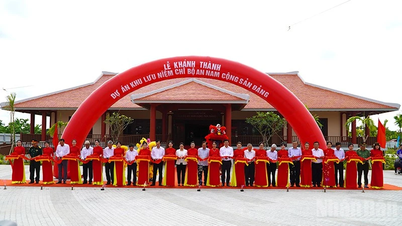











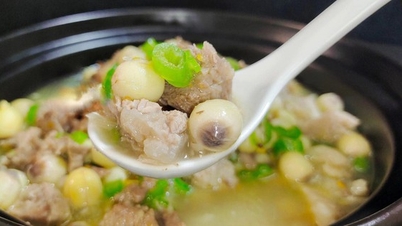



![[Photo] Prime Minister Pham Minh Chinh chairs the first meeting of the Central Steering Committee on housing policy and real estate market](https://vphoto.vietnam.vn/thumb/1200x675/vietnam/resource/IMAGE/2025/9/22/c0f42b88c6284975b4bcfcf5b17656e7)









































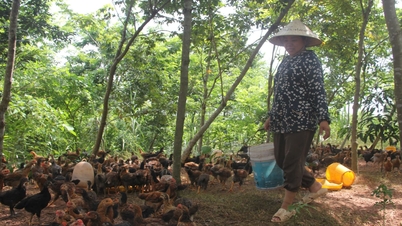

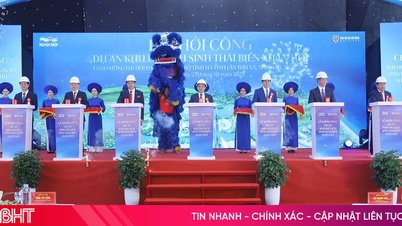







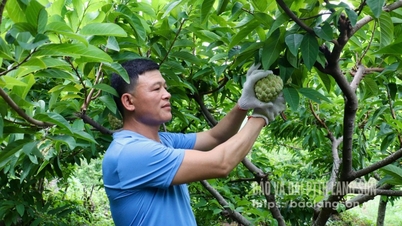

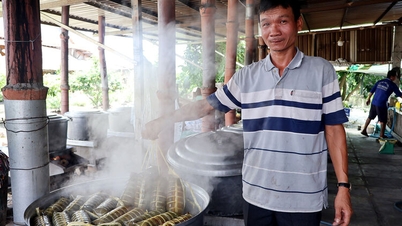










Comment (0)